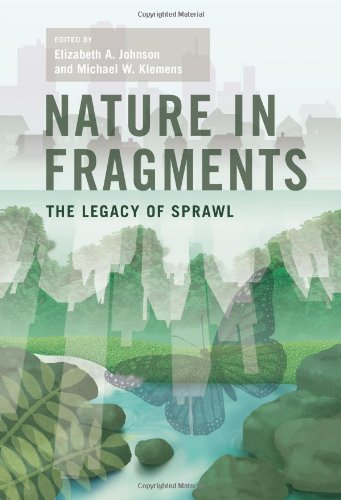

Most ebook files are in PDF format, so you can easily read them using various software such as Foxit Reader or directly on the Google Chrome browser.
Some ebook files are released by publishers in other formats such as .awz, .mobi, .epub, .fb2, etc. You may need to install specific software to read these formats on mobile/PC, such as Calibre.
Please read the tutorial at this link: https://ebookbell.com/faq
We offer FREE conversion to the popular formats you request; however, this may take some time. Therefore, right after payment, please email us, and we will try to provide the service as quickly as possible.
For some exceptional file formats or broken links (if any), please refrain from opening any disputes. Instead, email us first, and we will try to assist within a maximum of 6 hours.
EbookBell Team

0.0
0 reviews
ISBN 10: 0231127790
ISBN 13: 978-0231127790
Author: Elizabeth Johnson, Michael Klemens
This new collection focuses on the impact of sprawl on biodiversity and the measures that can be taken to alleviate it. Leading biological and social scientists, conservationists, and land-use professionals examine how sprawl affects species and alters natural communities, ecosystems, and natural processes. The contributors integrate biodiversity issues, concerns, and needs into the growing number of anti-sprawl initiatives, including the "smart growth" and "new urbanist" movements.
Part I: Biodiversity and the Genesis of Sprawl
1. The Context and Causes of Sprawl
2. The Impacts of Sprawl on Biodiversity
Part II: Sprawl, Ecosystems, and Processes
3. Freshwater Wetland Biodiversity in an Urbanizing World
4. Ecosystems, Disturbance, and the Impact of Sprawl
5. Bees, Pollination, and the Challenges of Sprawl
6. Effects of Urbanization on Decomposer Communities and Soil Processes in Forest Remnants
7. Sprawl and Disease
Part III: Sprawl and Species
8. Sprawl and Species with Limited Dispersal Abilities
9. Sprawl and Highly Mobile or Wide-Ranging Species
10. Species that Benefit from Sprawl
Part IV: Identifying and Meeting the Challenges of Sprawl
11. Maintaining Connectivity in Urbanizing Landscapes
12. The Economics of Biodiversity in Urbanizing Ecosystems
13. Conserving Biodiversity Through State and Regional Planning
14. Integrating Conservation of Biodiversity into Local Planning
15. Building Public Awareness About the Effects of Sprawl on Biodiversity
16. Creating a Framework for Change
fragment of nature
nature in things fall apart
nature of fragile things chapter summary
fragmentary nature
nature of fragile things summary
Tags: Elizabeth Johnson, Michael Klemens, Fragments, Nature